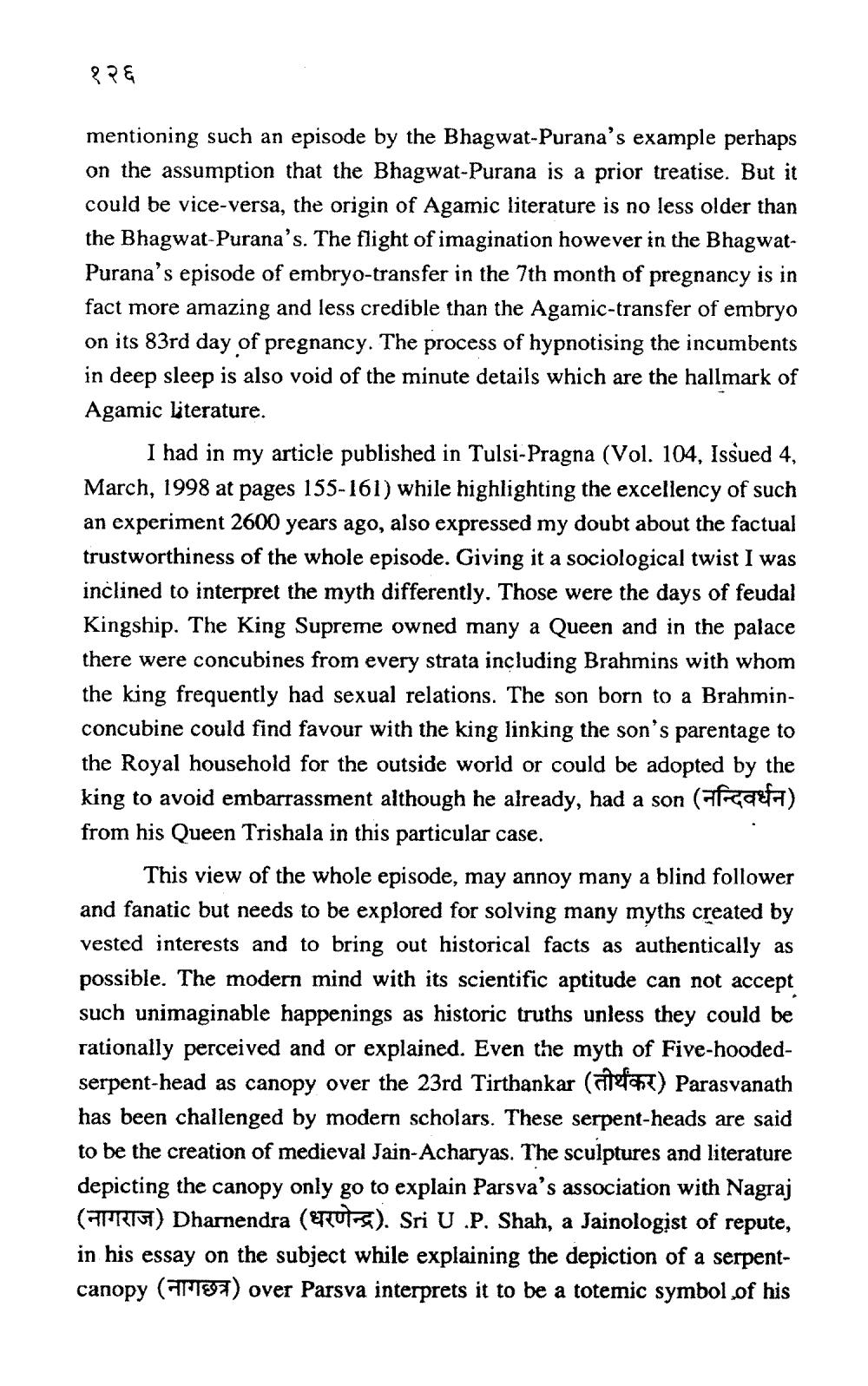________________
१२६
mentioning such an episode by the Bhagwat-Purana's example perhaps on the assumption that the Bhagwat-Purana is a prior treatise. But it could be vice-versa, the origin of Agamic literature is no less older than the Bhagwat-Purana's. The flight of imagination however in the BhagwatPurana's episode of embryo-transfer in the 7th month of pregnancy is in fact more amazing and less credible than the Agamic-transfer of embryo on its 83rd day of pregnancy. The process of hypnotising the incumbents in deep sleep is also void of the minute details which are the hallmark of Agamic literature.
I had in my article published in Tulsi-Pragna (Vol. 104, Issued 4, March, 1998 at pages 155-161) while highlighting the excellency of such an experiment 2600 years ago, also expressed my doubt about the factual trustworthiness of the whole episode. Giving it a sociological twist I was inclined to interpret the myth differently. Those were the days of feudal Kingship. The King Supreme owned many a Queen and in the palace there were concubines from every strata including Brahmins with whom the king frequently had sexual relations. The son born to a Brahminconcubine could find favour with the king linking the son's parentage to the Royal household for the outside world or could be adopted by the king to avoid embarrassment although he already, had a son (af Gaza) from his Queen Trishala in this particular case.
This view of the whole episode, may annoy many a blind follower and fanatic but needs to be explored for solving many myths created by vested interests and to bring out historical facts as authentically as possible. The modern mind with its scientific aptitude can not accept such unimaginable happenings as historic truths unless they could be rationally perceived and or explained. Even the myth of Five-hoodedserpent-head as canopy over the 23rd Tirthankar (alfat) Parasvanath has been challenged by modern scholars. These serpent-heads are said to be the creation of medieval Jain-Acharyas. The sculptures and literature depicting the canopy only go to explain Parsva's association with Nagraj (APR ) Dharnendra (ETCUTES). Sri U .P. Shah, a Jainologist of repute, in his essay on the subject while explaining the depiction of a serpentcanopy (1 187) over Parsva interprets it to be a totemic symbol of his




